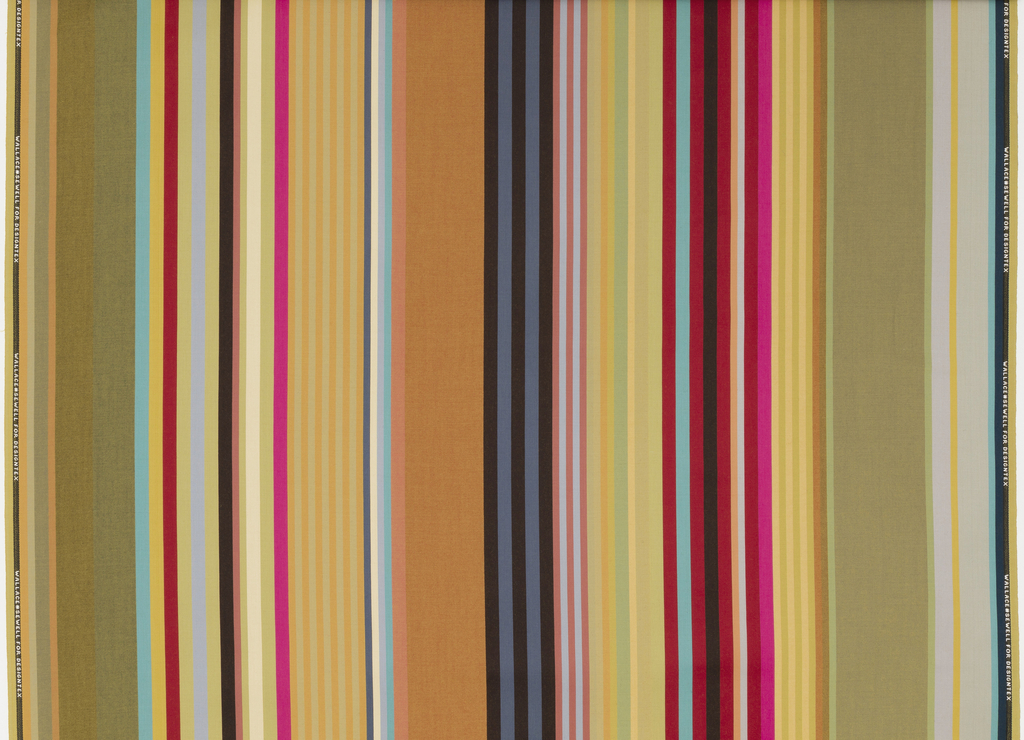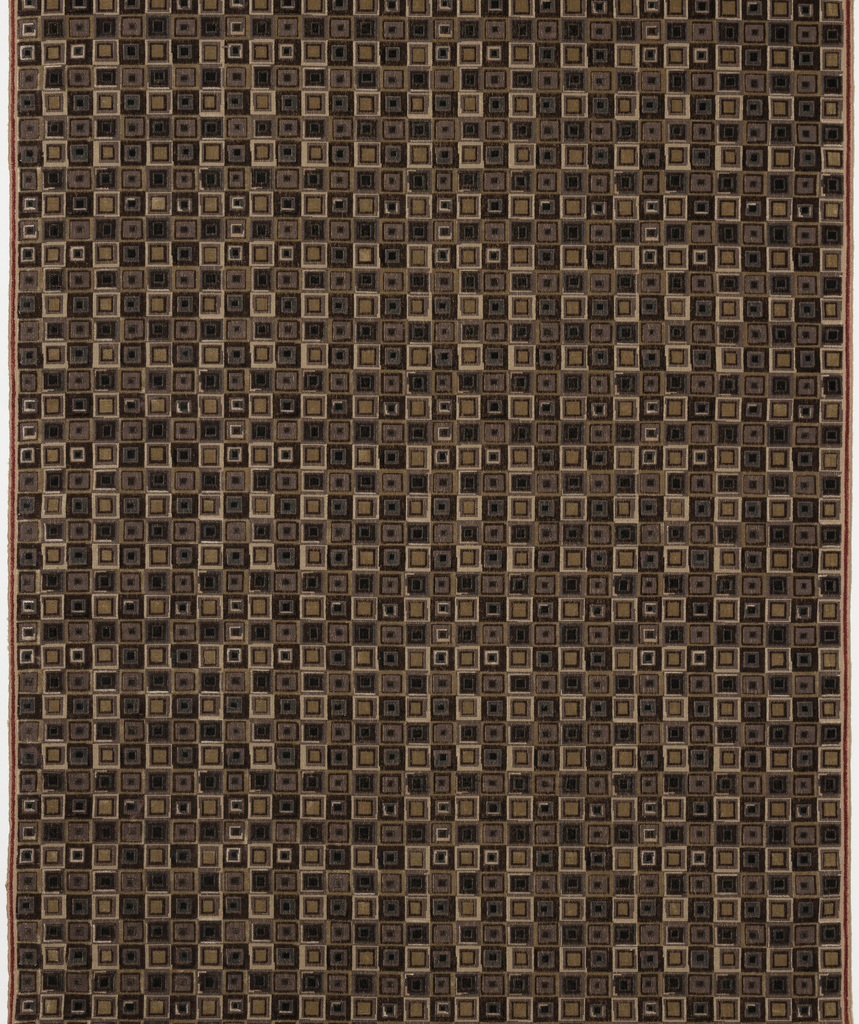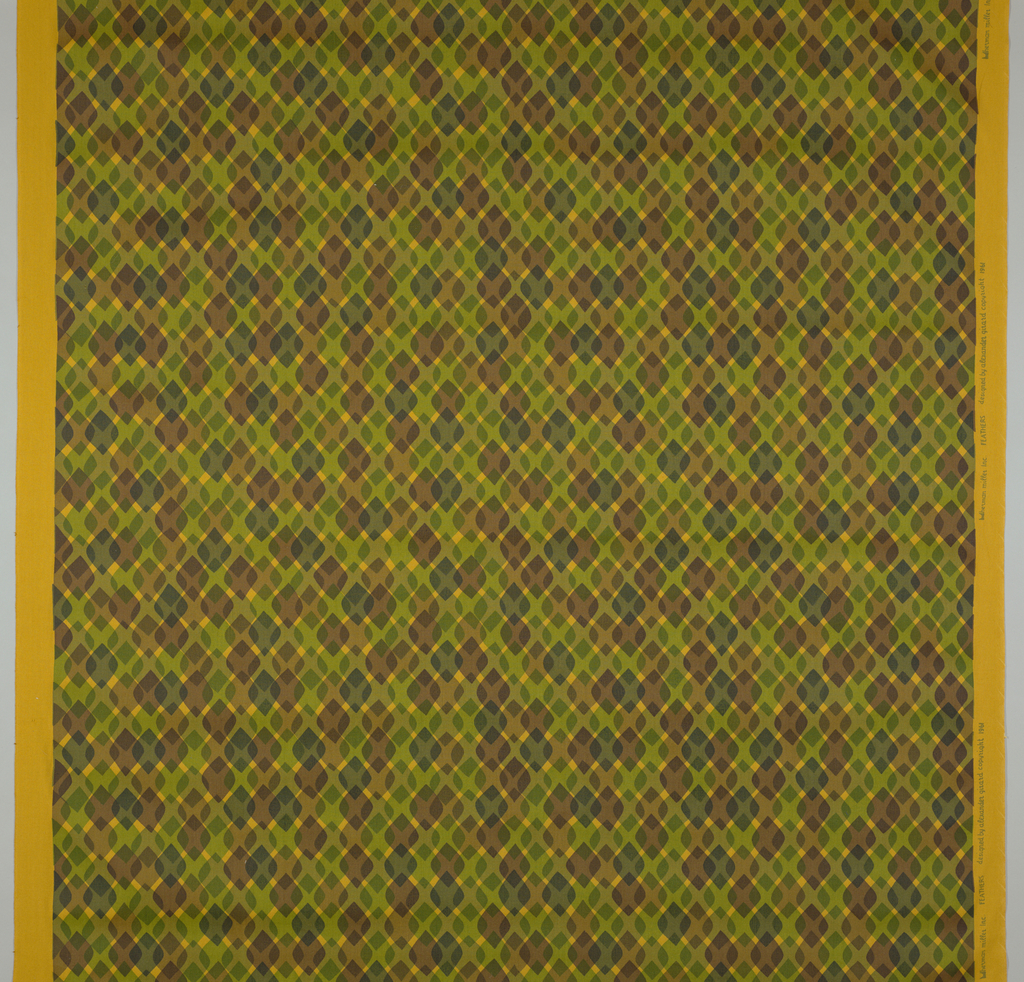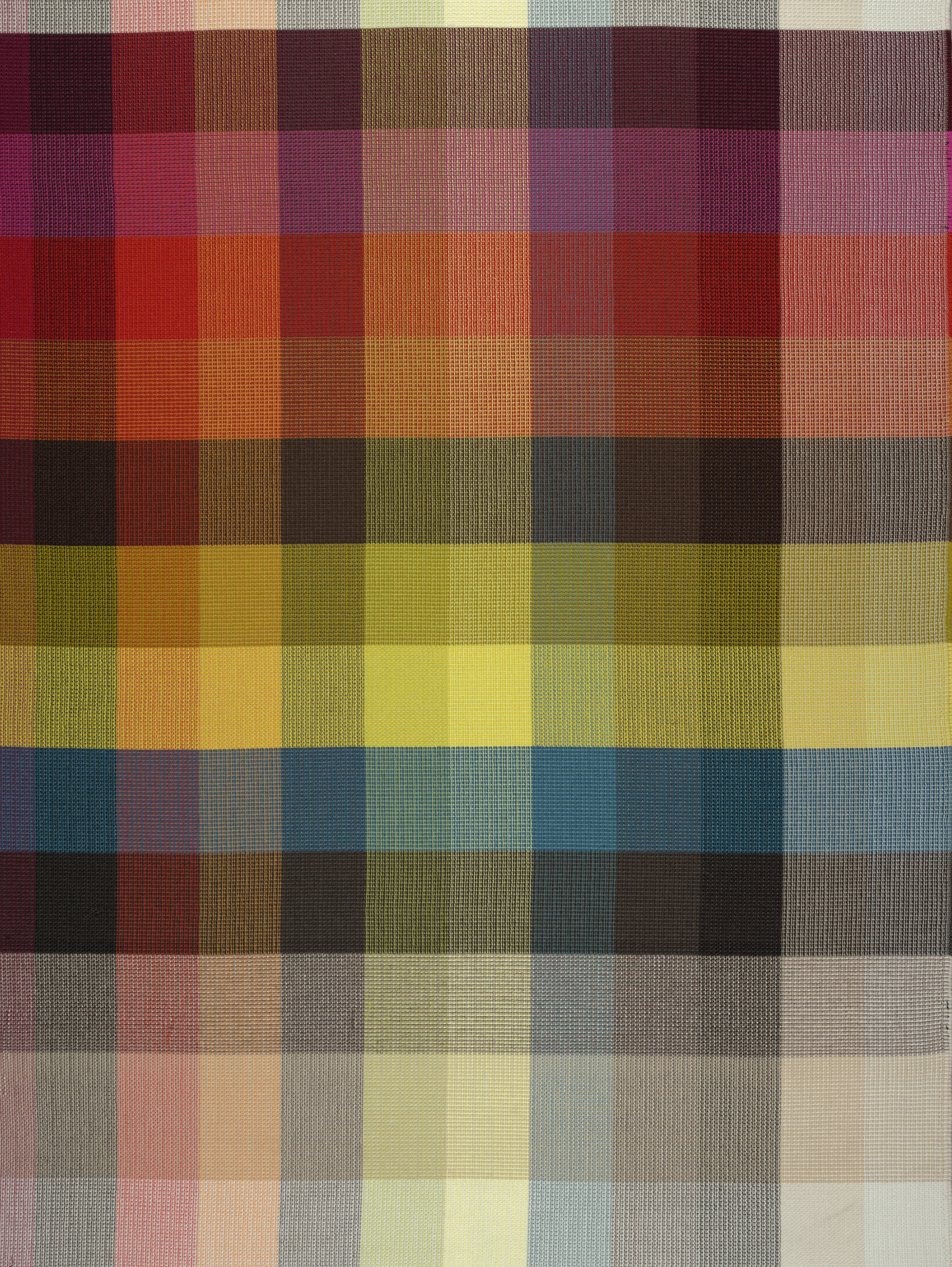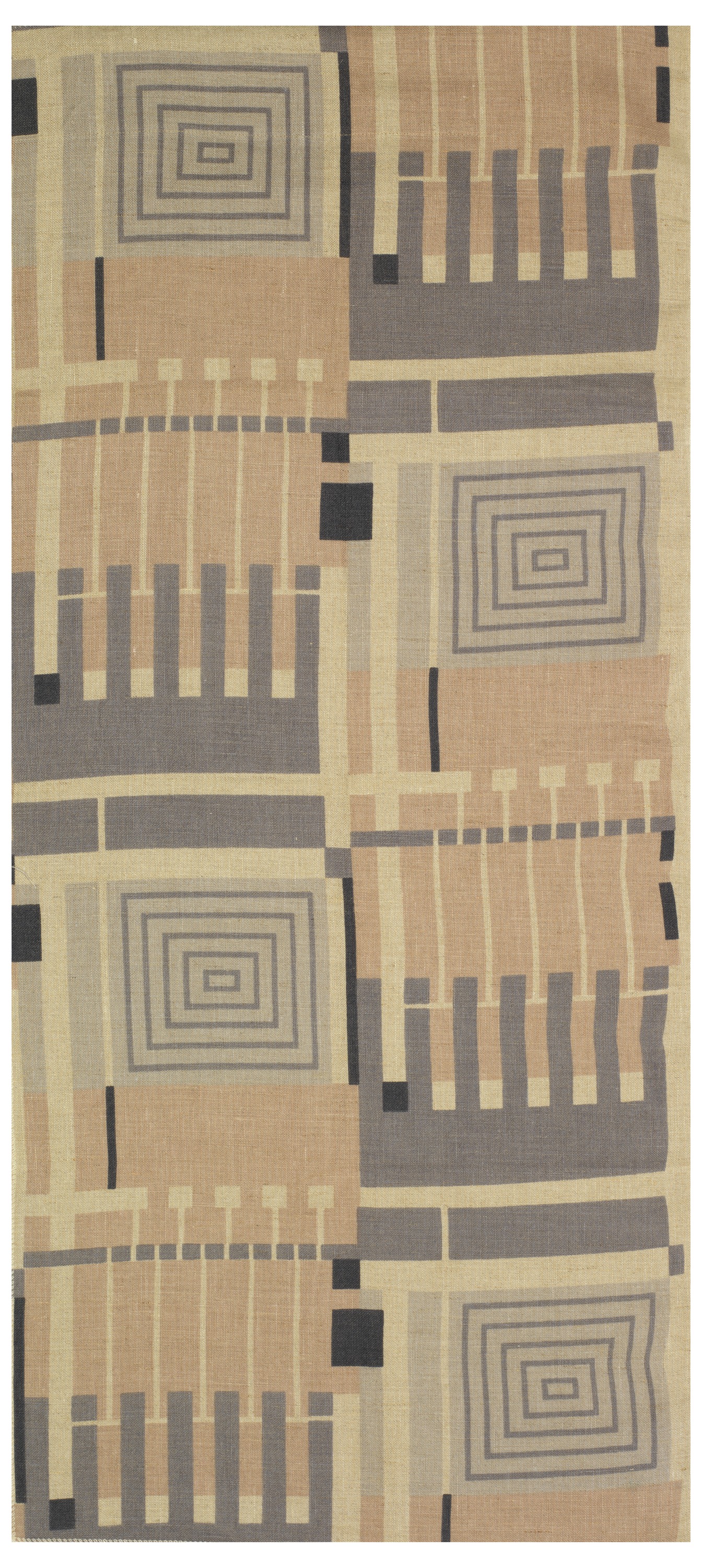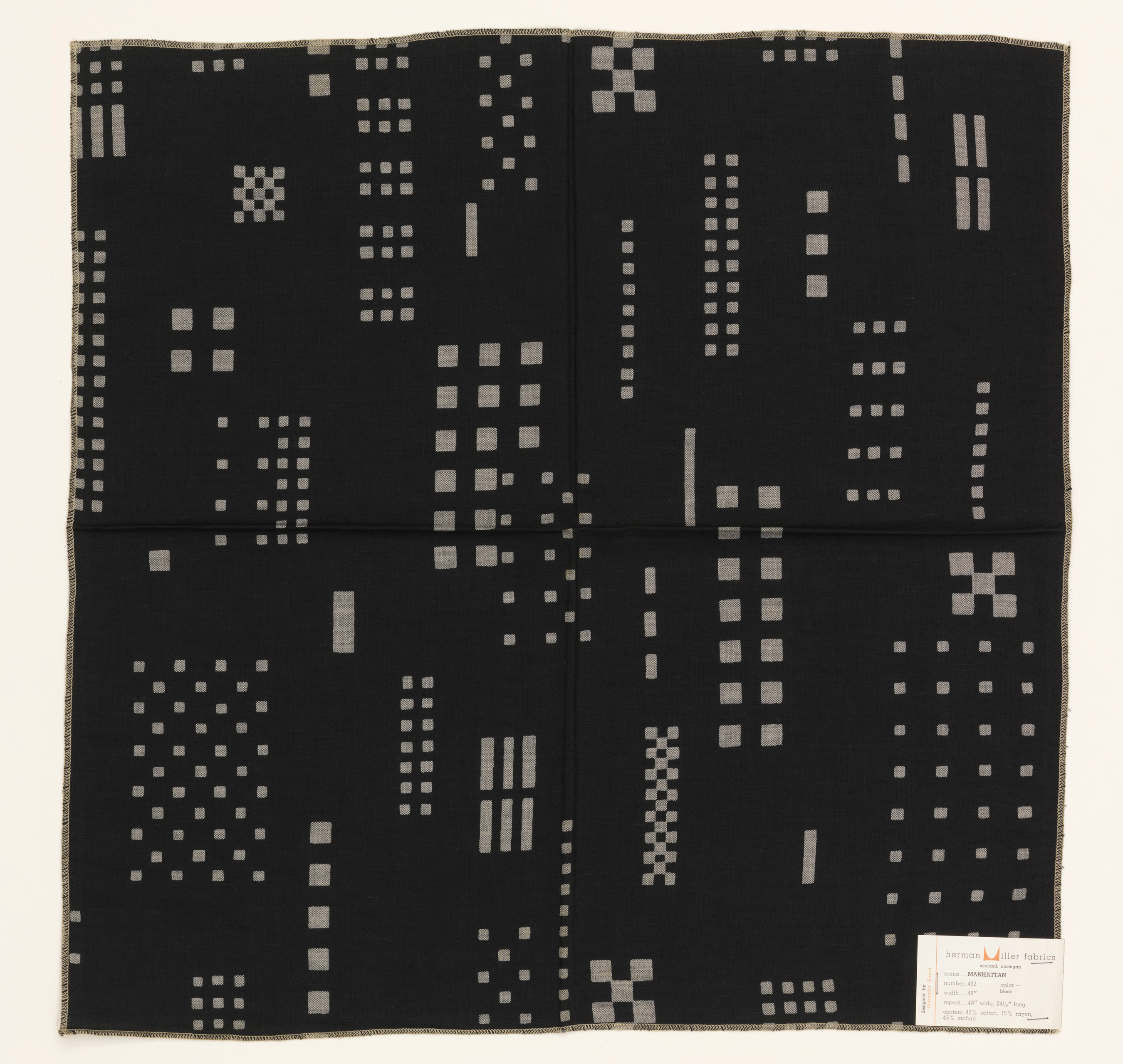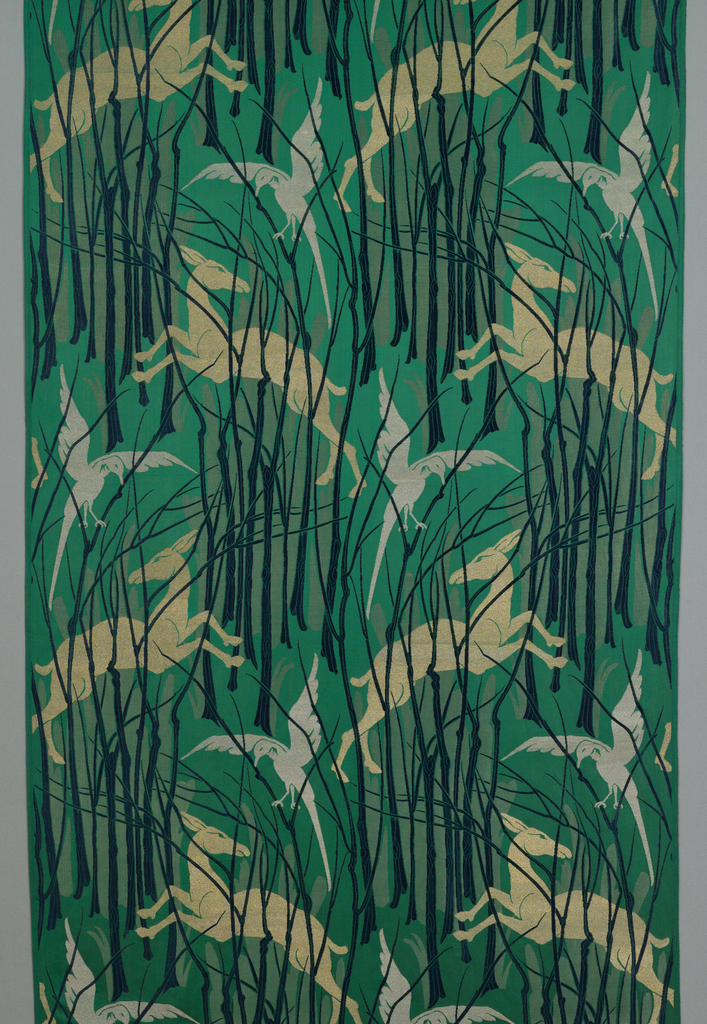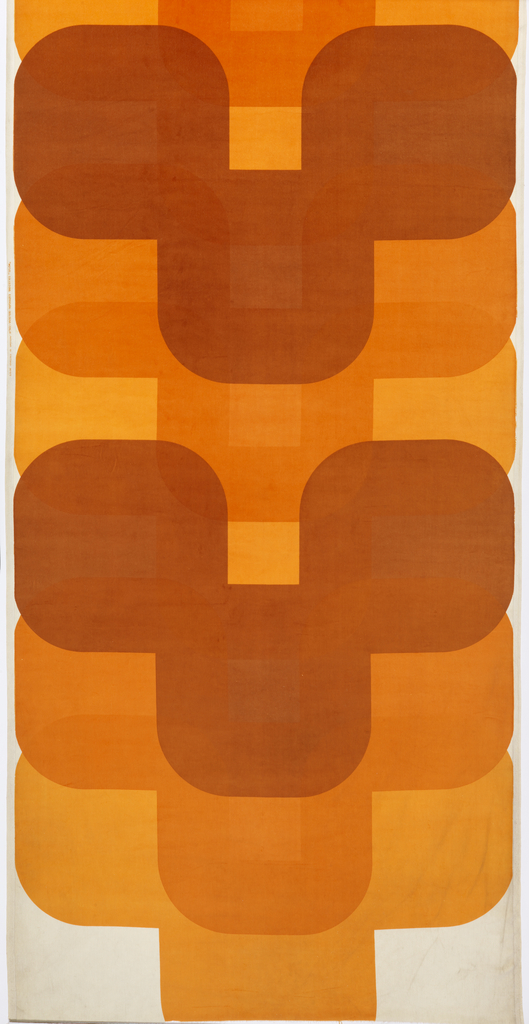A series of wool fabrics in saturated, oversized plaid is Designtex’s most recent collaboration with Harriet Wallace-Jones and Emma Sewell of the British textile studio Wallace Sewell (already represented in Cooper Hewitt’s collection with a blanket). The large-repeat stripes and grids are inspired in part by Bauhaus textile artist Anni Albers and in part by...
In composition, Kaleidoscope closely resembles Larsen’s famous design of concentric squares, Magnum. But whereas that design was machine-embroidered around mirror-like squares of Mylar, Kaleidoscope is a durable, hard-wearing upholstery in a technique called epinglé velvet – so named for the wires which are inserted into the shed during the weaving and over which the pile...
Alexander Hayden Girard made an indelible (and colorful!) impact on 20th century modernist textile design. At the helm of Herman Miller’s textiles division, his playfulness provided a warm complement to the stark simplicity of furniture designs of Charles and Ray Eames and George Nelson. As its title suggests, Ribbons features overlapping, irregular vertical rectangles reminiscent...
Alexander Girard was the head of the Textile Division of Herman Miller Inc. from 1952 to 1973. During this time, he created over three hundred designs for textiles coordinated for use as upholstery fabrics and draperies for private and commercial interiors, exhibitions and corporate identity programs. His exuberant use of color, texture and pattern drew...
Knoll introduced Cato in 1961 and it has been in continuous production ever since, making it one of the most successful designs the company ever produced. It was designed and woven by Paul Maute, a German designer/weaver whose contributions to Knoll Textiles were both influential and lasting. In 1927, Maute established his weaving workshop in...
Although most of his home furnishings were designed for specific interiors, Frank Lloyd Wright created several lines of products for the market, among them the Taliesin Line of wall coverings and textiles, produced in partnership with F. Schumacher and Company. The collection included wallpaper, woven fabric, and printed fabric such as this, and many of...
Jack Lenor Larsen (b.1927) is one of America’s most prolific and innovative twentieth century textile designers. He came to prominence in the 1950s with his distinctive hand-woven casement fabrics for the commercial contract market. But he was not surprised to later become best known for his sumptuous printed fabrics like Primavera. For Larsen, it was...
Alexander Girard produced over 300 textile designs during his almost 30-year tenure at Herman Miller, an important American furniture company and promoter of modern design. That Girard was trained as an architect should come as no surprise—like many architects of his generation, he had experienced firsthand the challenge of finding textiles appropriate for a modern...
American textile designer and collector Herman A. Elsberg (American, 1869–1938) designed this eye-catching furnishing fabric in the early 1920s. It was hand woven on a Jacquard loom at Elsberg’s factory in Lyon, France. Gold gazelles leap under the watchful eyes of silver falcons on a brilliant green ground scattered with clusters of leafless dark blue...
Gaetano Pesce was trained as an architect in Italy, but has also practiced in Paris and currently works in the United States. An extremely successful and influential designer, Pesce has established a reputation as an architect who is opposed to specialization. He has experimented, in his words, in “all fields of creative activity.” His multidisciplinary...
